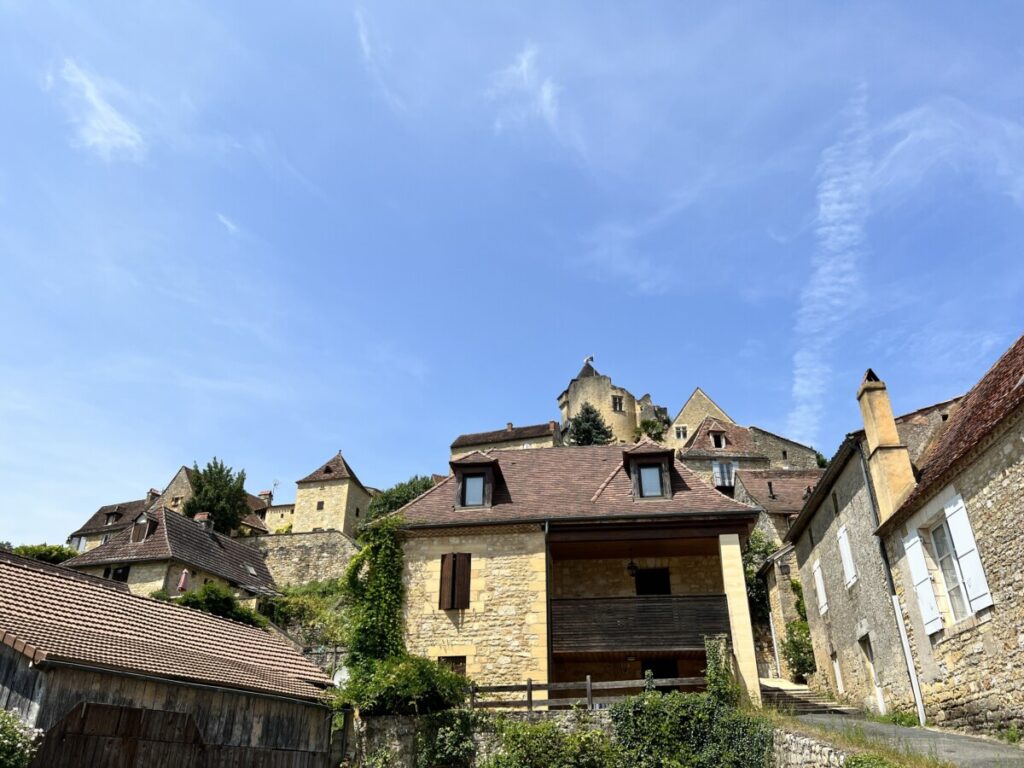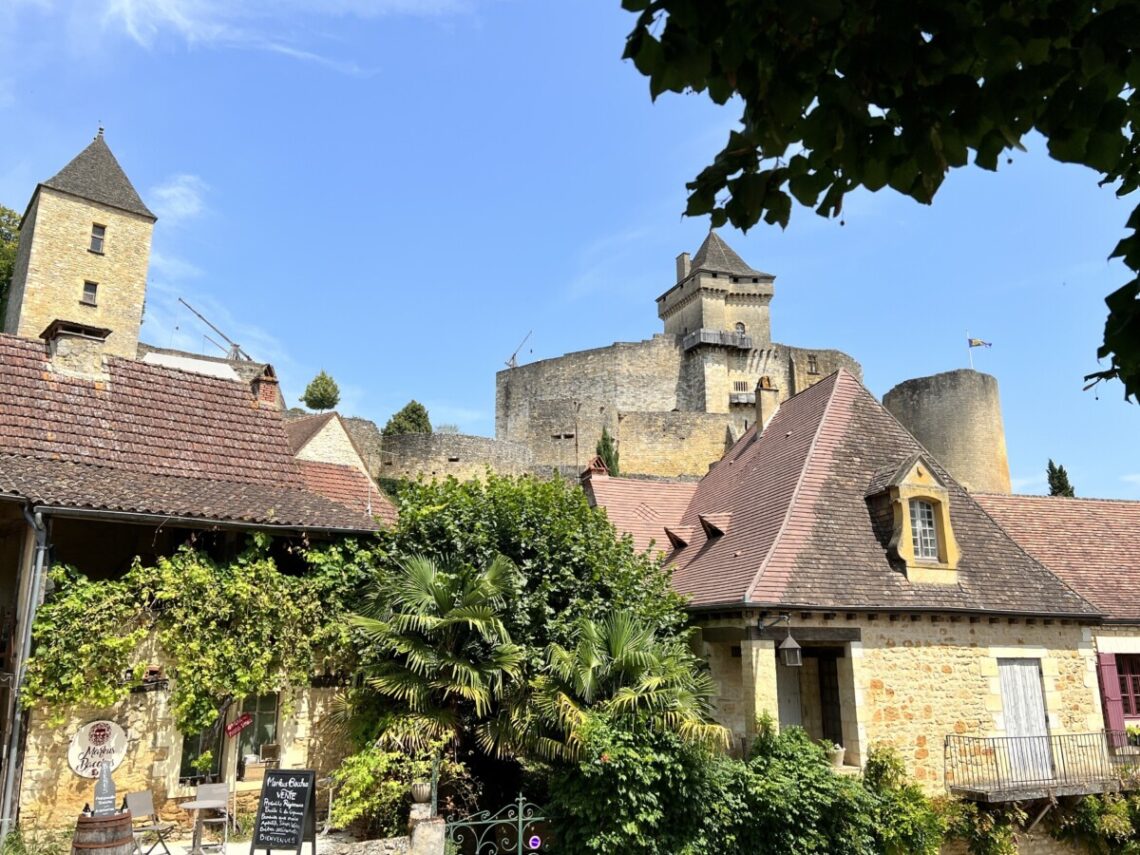
The Castle in Castelnaud
I’m captivated by Dordogne, as you can tell from my recent post. There are many exciting places to discover in this region in France known for its picturesque villages and rich history. The same goes for the beautiful town of Castelnaud. With its impressive castle and idyllic location on a hill by the Dordogne River, Castelnaud is a must-visit if you’re in the area.
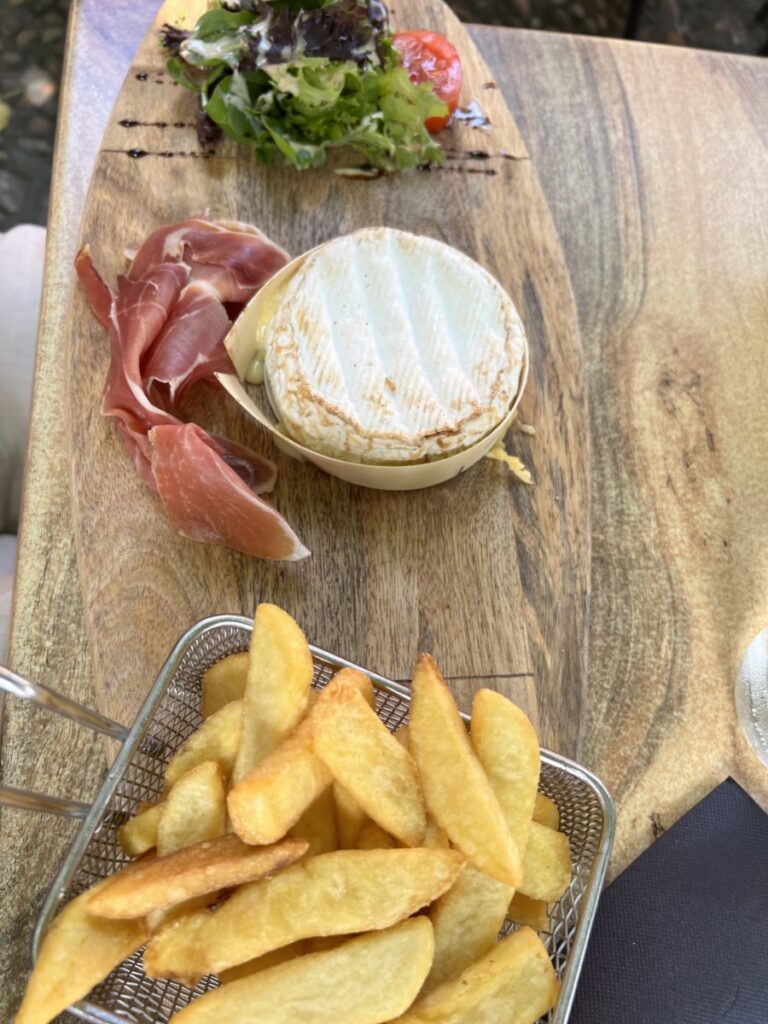
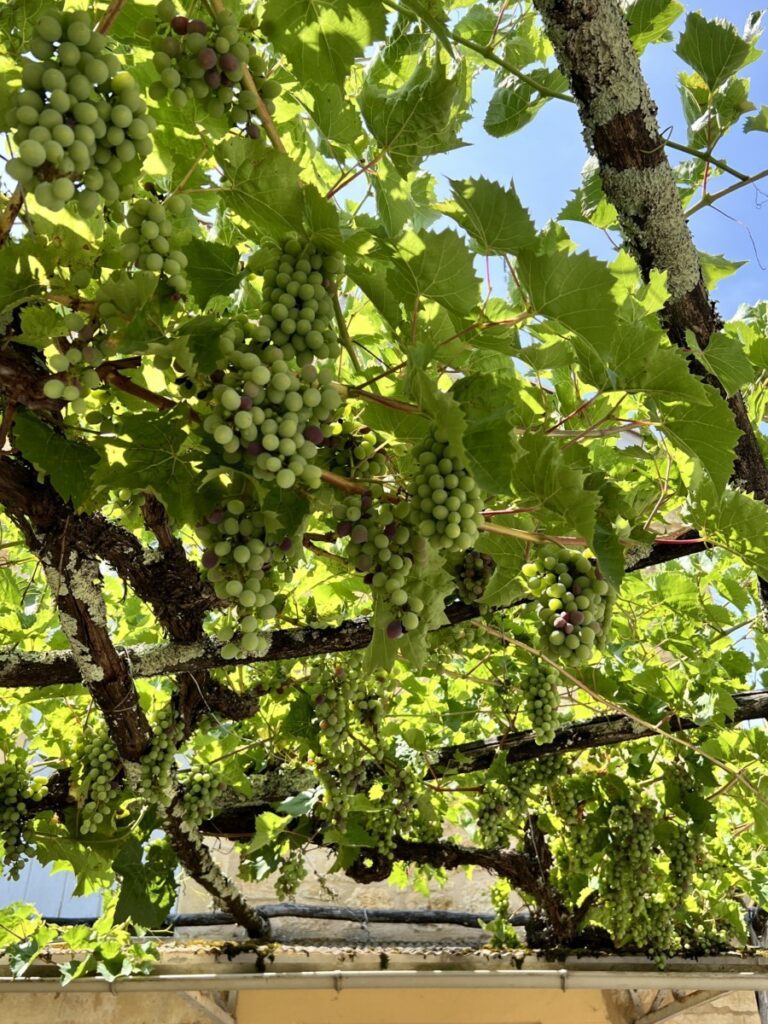
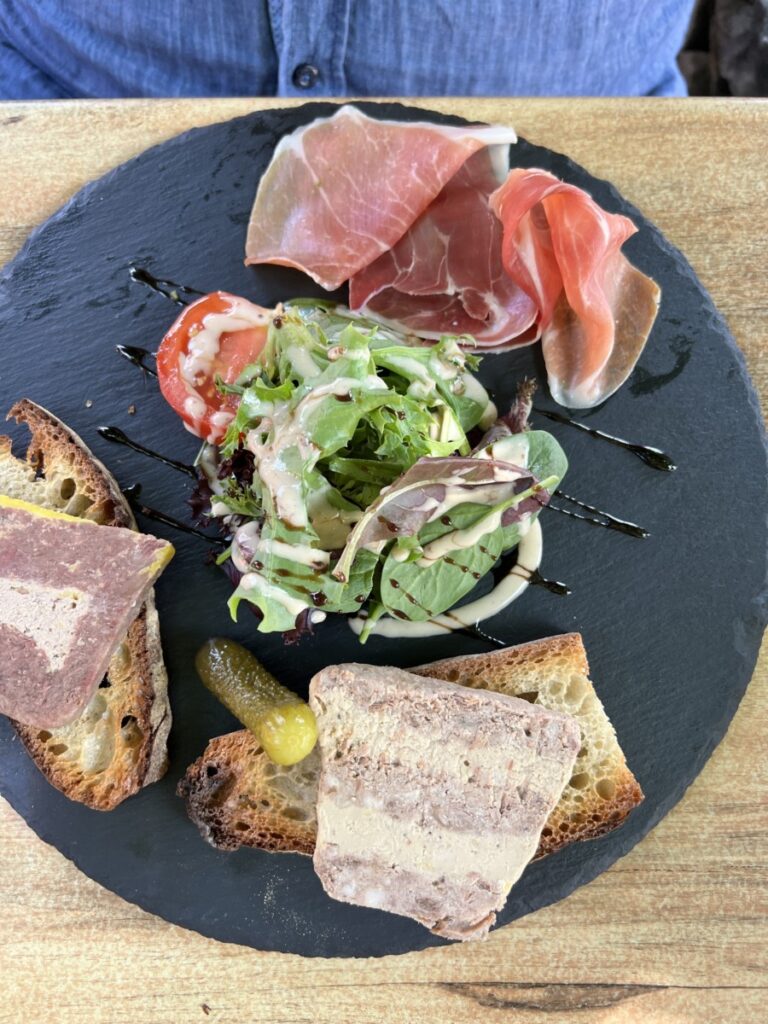
We parked our car down by the river and tourist office and headed up the road to reach the castle and the old part of the village. The restaurant at the top offerd standard french food from the region. We stopped by just for lunch as the time was around lunch time (between 12 and 14 ) and enjoyed delicious regional cuisine under a canopy of grapevines while gazing at the castle.
The History of Castelnaud
The castle, or Château de Castelnaud, is one of the most iconic landmarks in the region. Built in the 12th century, it has played a central role in Dordogne’s history. During the Hundred Years’ War (1337-1453), the castle was a strategically important fortress, changing hands several times between the French and the English.
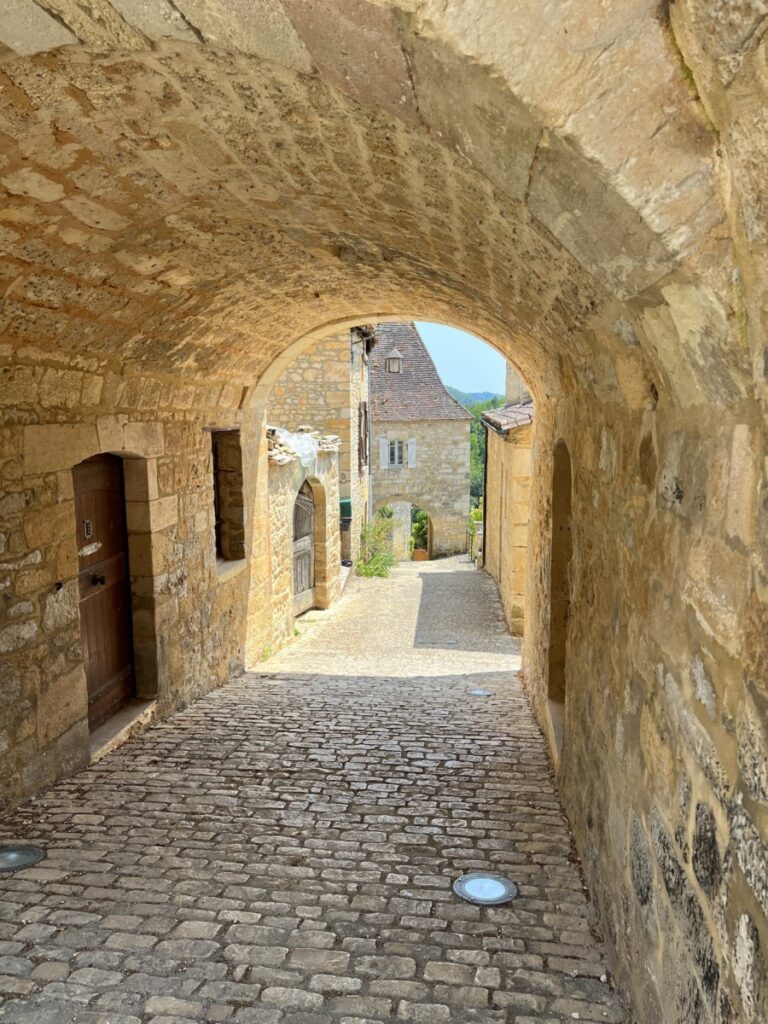
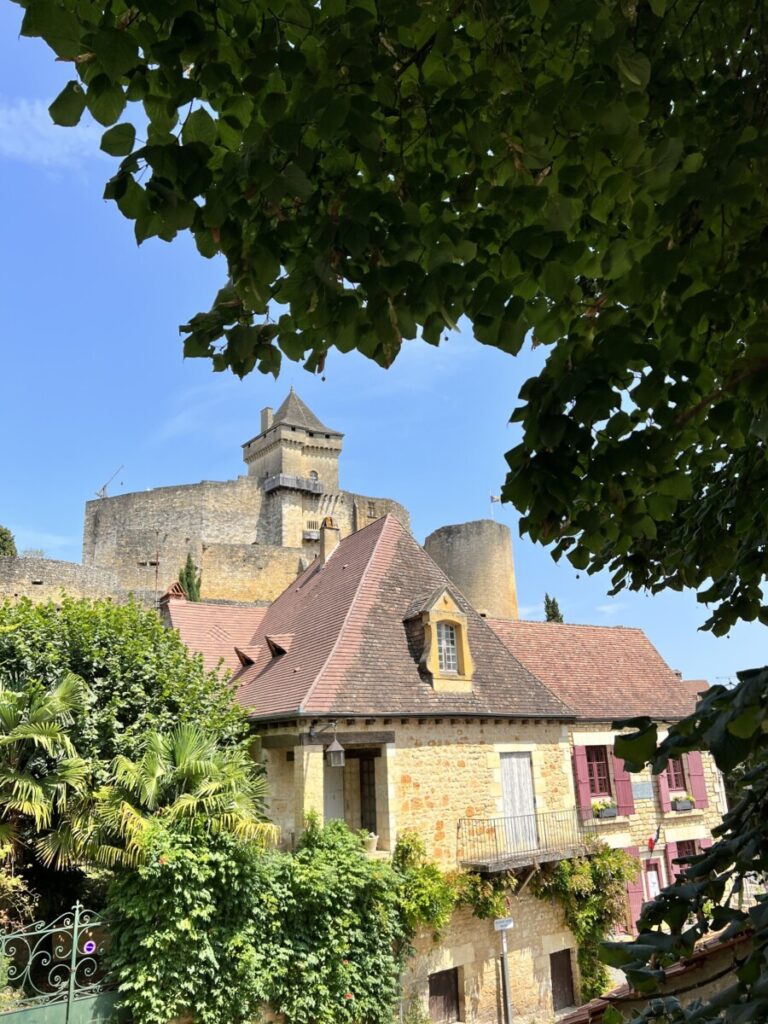

Towards the end of the Middle Ages, the owners desired a more “modern” residence and built Chateau des Milandes, which was later purchased by Josephine Baker. Castelnaud was then only inhabited by a few soldiers and eventually became completely deserted and left to decay. Parts of the castle were used as a “quarry” for other buildings in the village and nearby.
In 1965, the Rossillon family from Beynac bought the castle. They began restoration work, and in 1966, the castle was classified as a historic monument. Large parts of the castle are open to the public year-round. It also includes a museum of medieval warfare. Visitors can see exhibitions of weapons, armor, and catapults, offering a fascinating glimpse into medieval life.
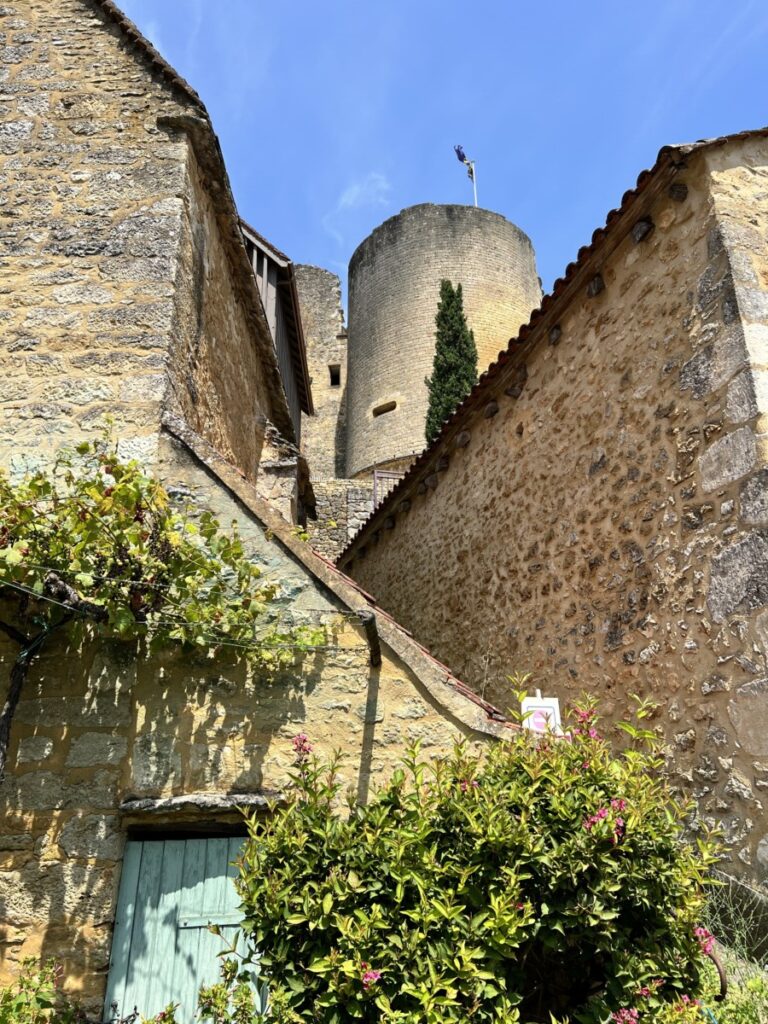

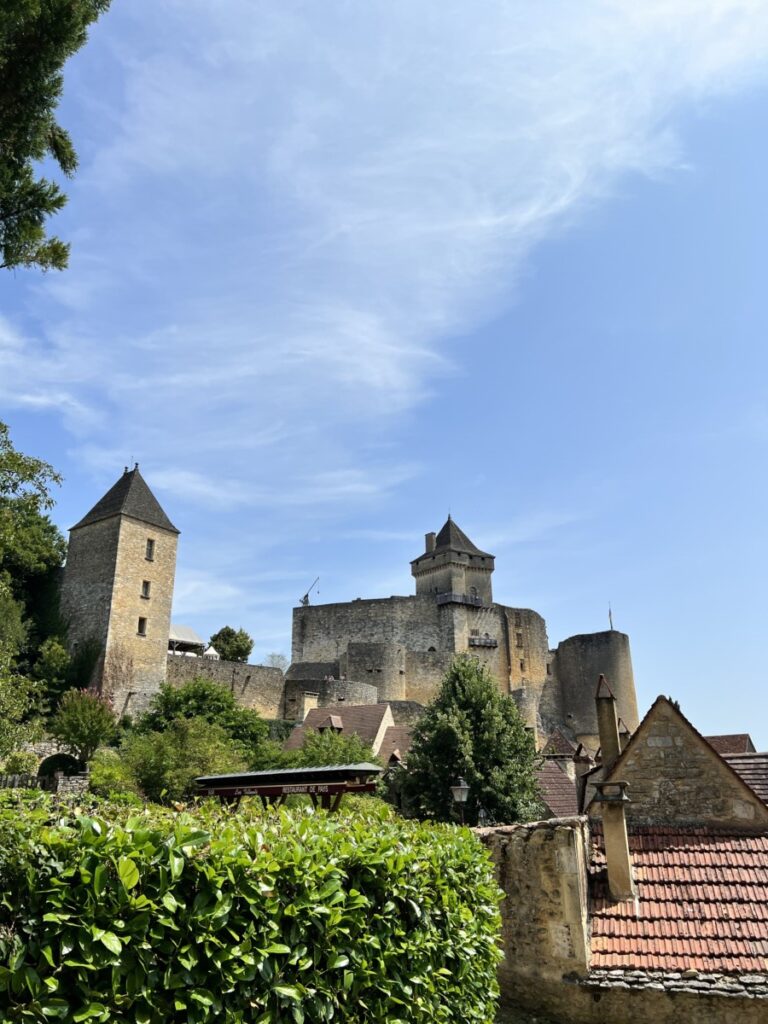
Castelnaud in Dordogne’s History
Dordogne is a region with a rich history dating back to prehistoric times. Castelnaud is near other historic towns like Beynac and La Roque-Gageac, each with its own impressive castles and stories.
Beynac, located on the opposite side of the Dordogne River, is famous for its beautiful castle, Château de Beynac. These two castles were rivals during the Hundred Years’ War, often having conflicting interests and waging war against each other.
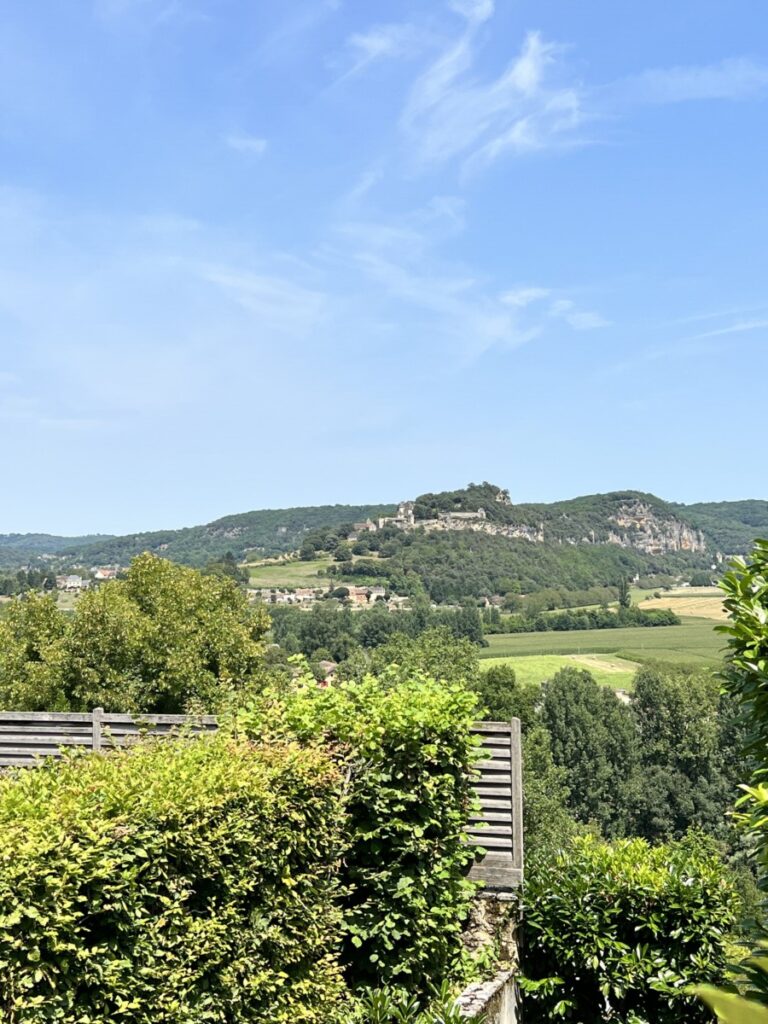

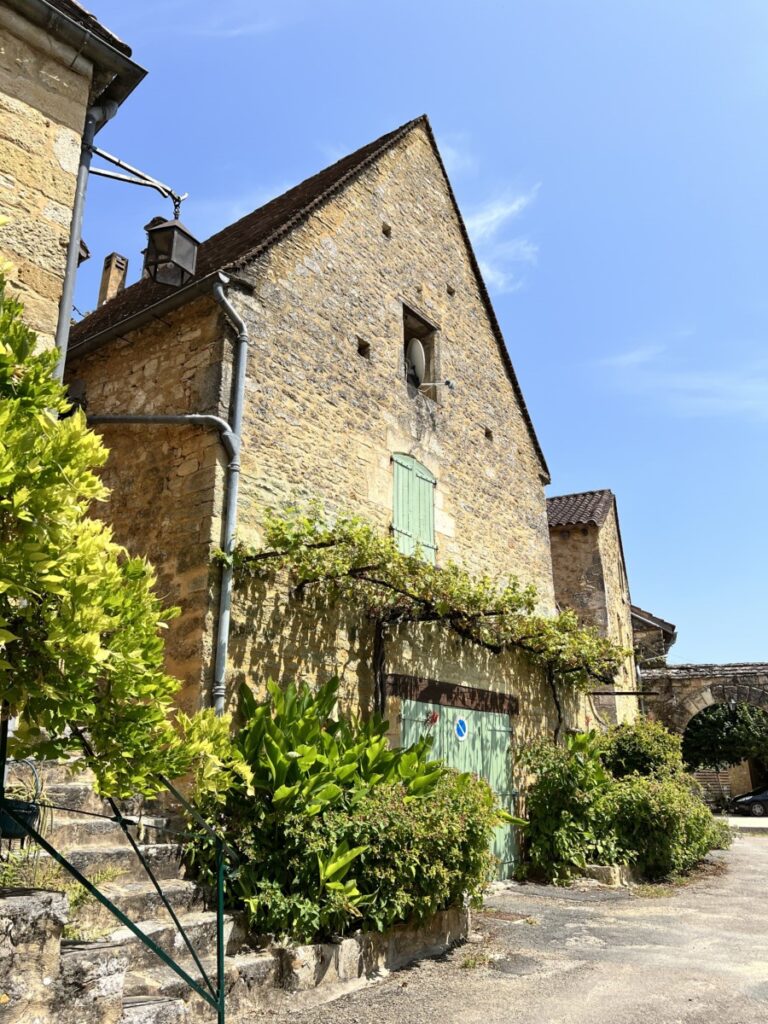
La Roque-Gageac, another neighboring village, is known for its stunning location by the river and its old houses built into the cliff walls. This village also has a rich history and, like Castelnaud, is classified as one of France’s most beautiful villages, Les plus beaux villages de France.
I’ve visited many such beautiful villages, and they are almost always worth a detour. Check out Le Bec-Hellouin in Normandy and the almost “namesake” Castelnou in the Pyrenees.
Geography and Nature
Castelnaud is situated in a landscape characterized by lush, green forests and hills, fertile valleys, and mighty rivers. The Dordogne River, flowing through the town, has shaped the landscape and sustained the region for centuries
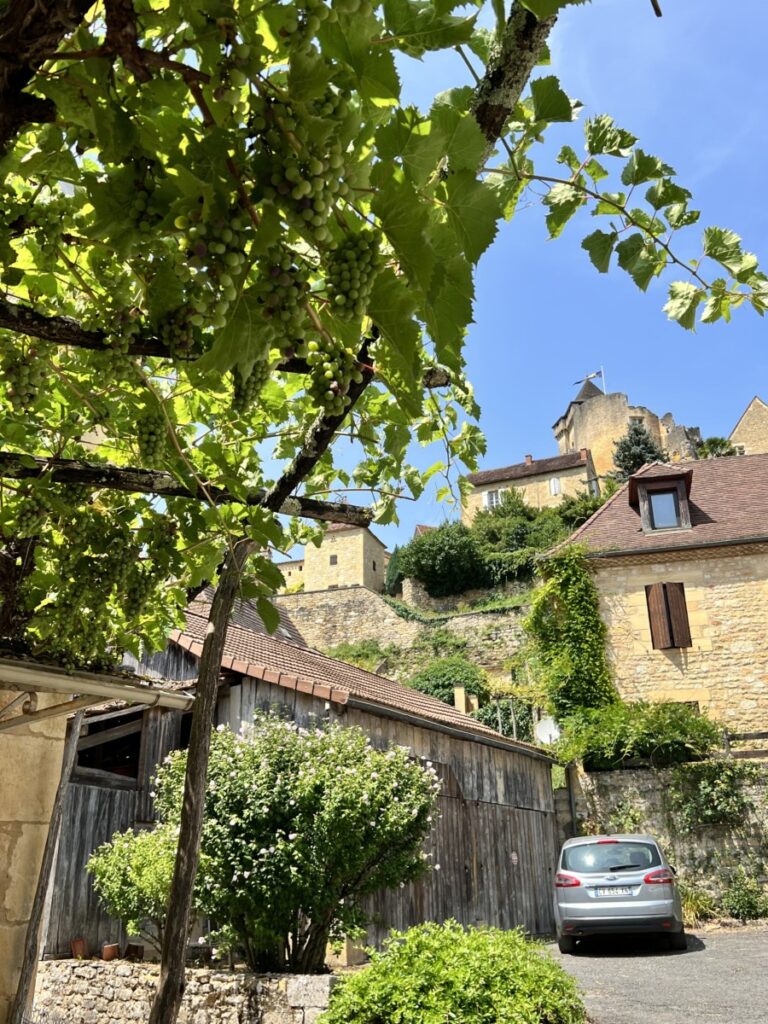
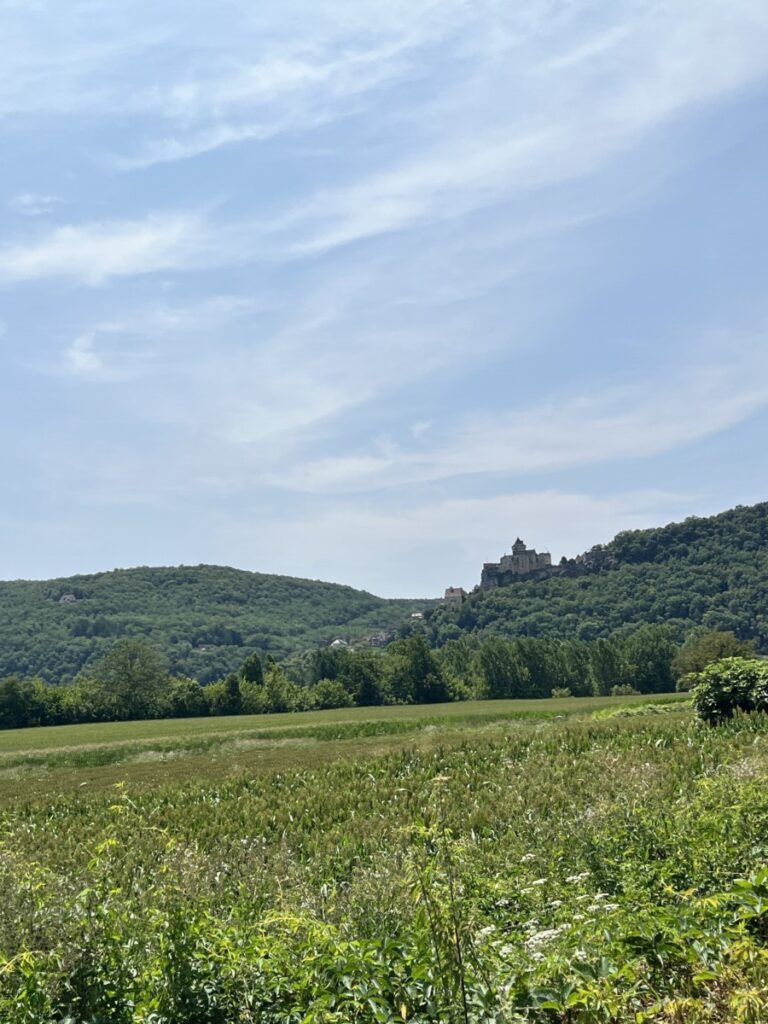
The area is also known for its vineyards and traditional French villages. They grow nuts, both walnuts and hazelnuts, and the region is famous for black truffles and everything related to ducks and geese. In other words, not a bad area for enjoying good food.
After lunch, we made our way back down to the car. It’s steep, but the road up was on smooth road, while we took the picturesque route down. Lot of cobblestones but it offered beautiful sights.
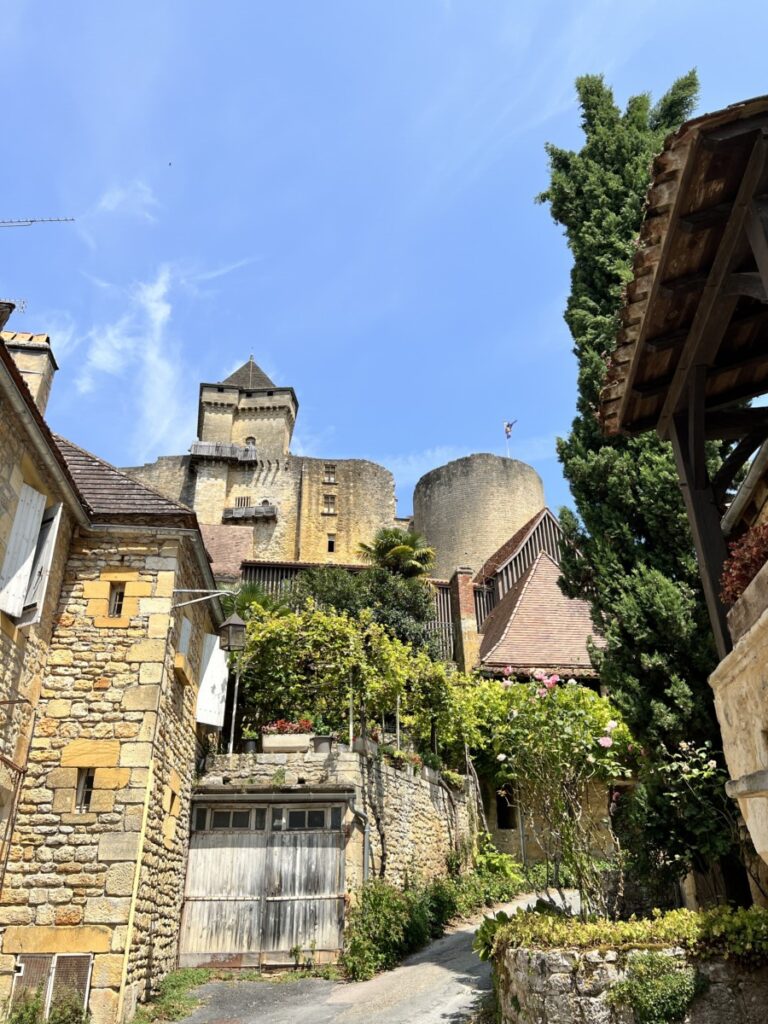
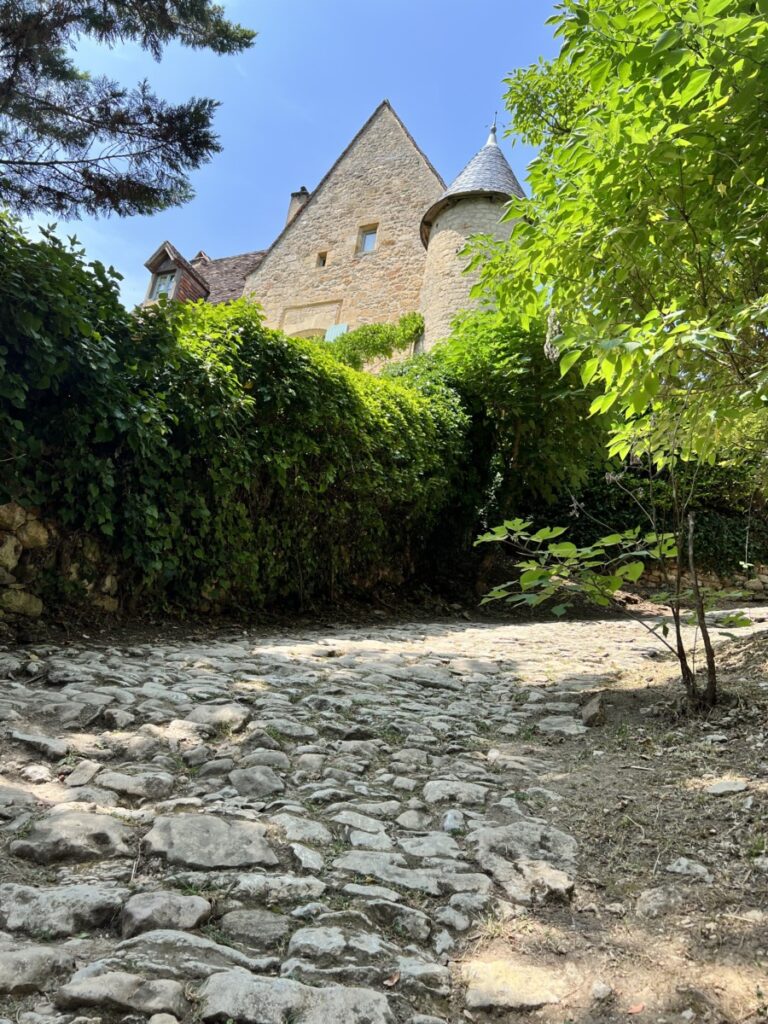
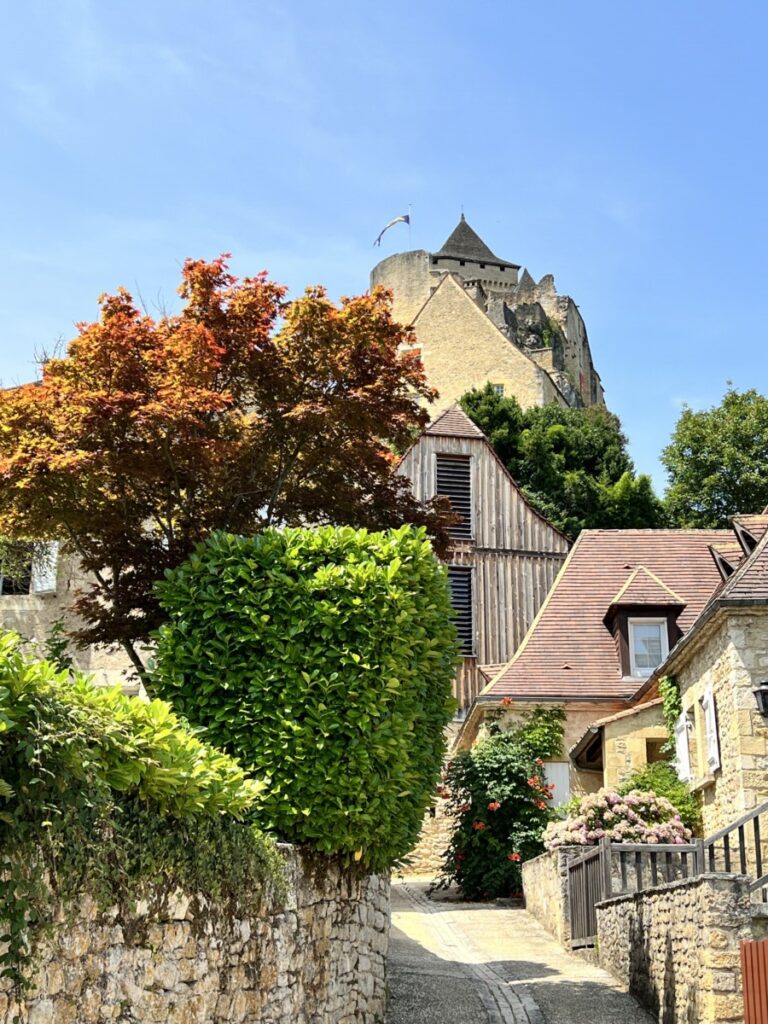
If you use Sarlat as your base for exploring Dordogne, Castelnaud is not far away. It’s also close to the famous Lascaux caves, where you can see the new museum building and the renowned cave paintings.
Dordogne is a fantastic region that is also easily accessible by train from Bordeaux or if you are driving from Scandinavia down to the south of France.
